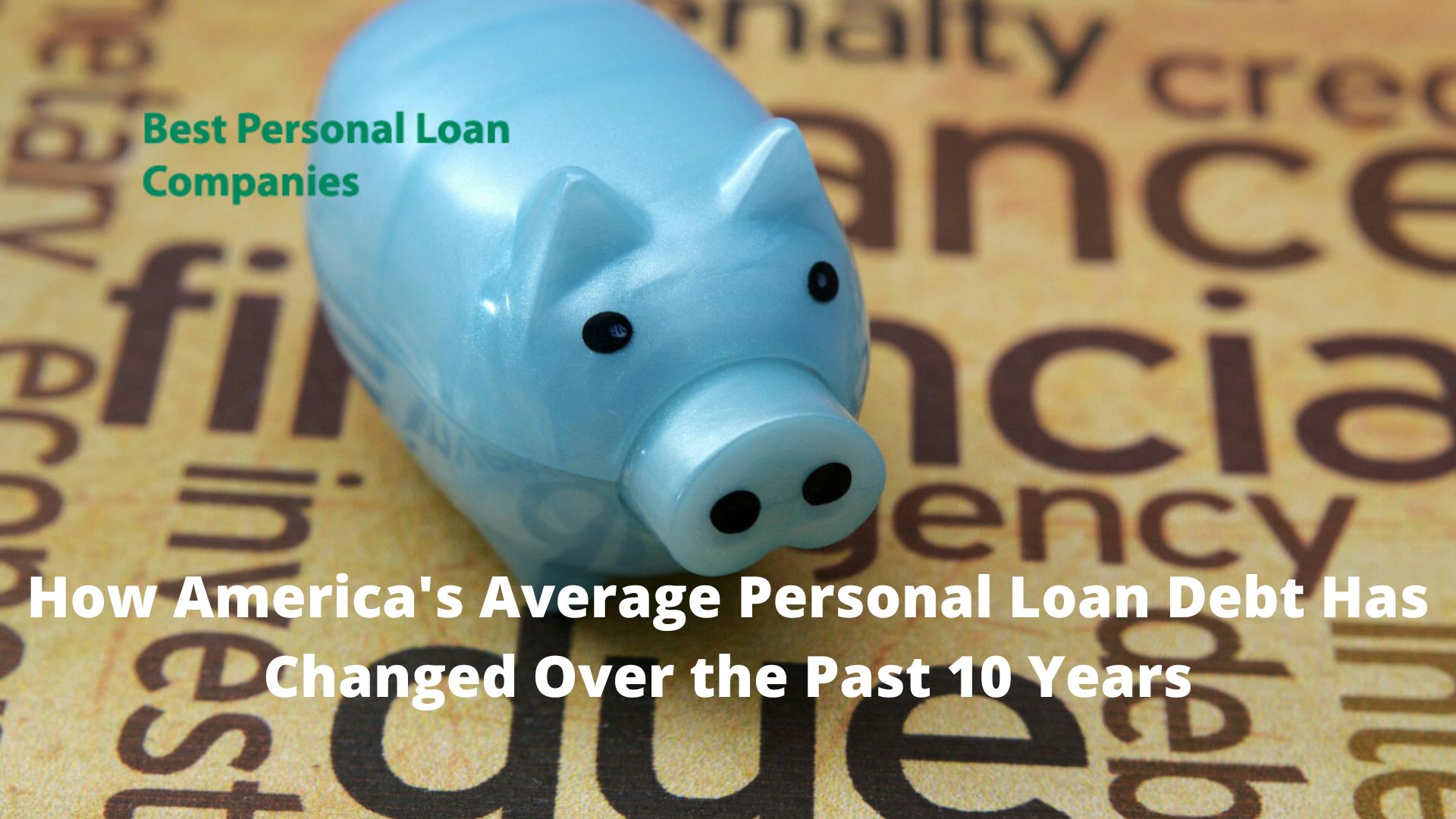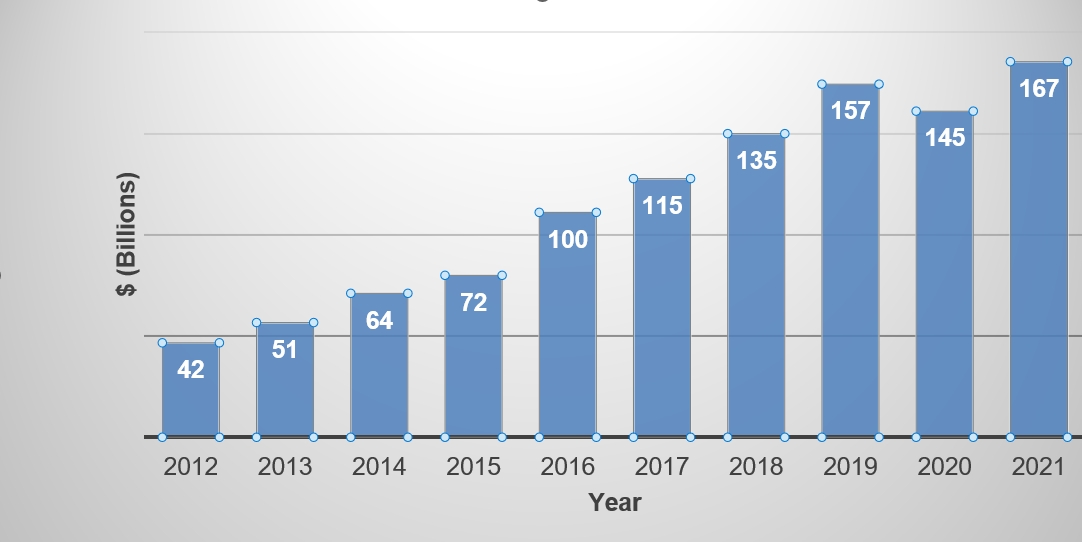US Average Personal Loan Debt Changes 2012 - 2022

For those who don't know or have forgotten, a personal loan is a type of short-term unsecured loan ranging from $100 to $100,000 that can be used to purchase personal items or restructure old debts.
US statistics show that total personal debt has been on an upward trend over the past 10 years. The only exception was 2020 when the total debt tended to decrease (Figure 1).

Figure 1 – Total U.S. Personal Loan Debt 2012-2021
Figure 1 shows that the total debt on general loans in 2021 increased almost 4 times compared to 2012, which suggests an increase in the attractiveness of personal loans for the American population. The decline in personal lending in 2020 is due to economic uncertainty, which was caused by COVID-19. The pandemic forced lenders to initially tighten credit conditions under personal lending agreements. At the same time, borrowers themselves were reluctant to take out a new 10.000$ Personal Loan, not knowing what would happen to their employment and income levels. By the end of 2020, in order to attract new borrowers, lenders eased lending conditions, placing a bet on borrowers with lower credit ratings. This ultimately translated into a significant increase in total personal loan debt in 2021.
It is also possible to state the dynamics of the increase in the average new personal loan over the years (Table 1).
Table 1 – Average quarterly size of a new consumer loan, 2019–2022, dollars
|
Year |
Quarter |
|||
|
Q1 |
Q2 |
Q3 |
Q4 |
|
|
2019 |
5,432 |
6,790 |
6,382 |
6,276 |
|
2020 |
5,619↑ |
6,690↓ |
6,092↓ |
5,816↓ |
|
2021 |
5,213↓ |
7,129↑ |
7,168↑ |
7,104↑ |
|
2022 |
6,656↑ |
8,085↑ |
|
|
There are also trends in increasing popularity of 20.000$ Loan across all generation groups, which confirms the attractiveness of personal lending among both young people and older age groups (Table 2).
Table 2 – Average debt on personal loans by age groups, 2019–2022, dollars
|
Year |
Generation |
|||
|
Z (18-24) |
Millennialls (25-40) |
X (41-56) |
Baby boomers (57-75) |
|
|
2019 |
4,526 |
11,819 |
17,175 |
19,253 |
|
2020 |
6,004↑ |
12,306↑ |
17,733↑ |
19,700↑ |
|
2021 |
6,658↑ |
13,418↑ |
18,922↑ |
20,370↑ |
The record inflation that is taking place in 2022 has hit consumers with bad credit hard, leading to an increase in personal loan delinquency levels in 2022.
Table 3 – The share of overdue personal loans in 2019-2022, %
|
Year |
Quarter |
|||
|
Q1 |
Q2 |
Q3 |
Q4 |
|
|
2019 |
3,47 |
3,12 |
3,28 |
3,46 |
|
2020 |
3,39↓ |
3,08↓ |
2,53↓ |
2,68↓ |
|
2021 |
2,66↓ |
2,28↓ |
2,52↓ |
3,00↑ |
|
2022 |
3,25↑ |
3,37↑ |
|
|